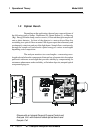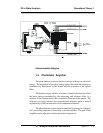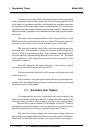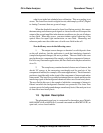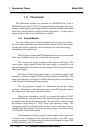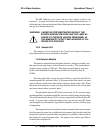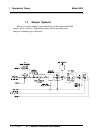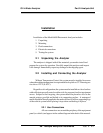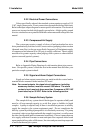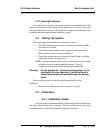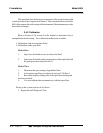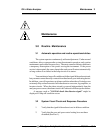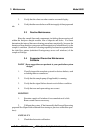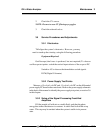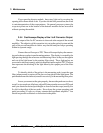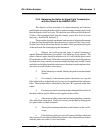
2 Installation Model 6600
2-2: Part II
Teledyne Analytical Instruments
2.2.2 Electrical Power Connections
Unless specifically ordered, the standard system requires a supply of 115
VAC, single-phase power. Power connections are made inside the control unit.
Refer to the input-output diagram for more specific information. The electrical
power service must include a high-quality ground wire. A high-quality ground
wire is a wire that has zero potential difference when measured to the power line
neutral.
2.2.3 Compressed Air Supply
The system may require a supply of clean, oil and particulate free air to
drive pneumatically activated valves, create suction (pumping) eductor action
(demand more flow), or for use as zero fluids. In general, a 2 liter/minute supply
of compressed air between 80 to 120 psig is usually sufficient. The air supply
must have far greater capacity when purging of the system or when eductors
ejectors are used (special systems).
2.2.4 Pipe Connections
Refer to Appendix Piping Drawings for information about pipe connec-
tions. On special systems, consult the text in the manual that describes your
particular sample system in detail.
2.2.5 Signal and Alarm Output Connections
Signal and alarm output connections are made inside the control unit to
terminal blocks mounted on the interface PC board.
Note: For current outputs, the signal circuit resistance, including
accessory devices, must not exceed 1000 ohms. The alarm
contact circuit must not draw more than 3 amperes at 250 VAC
(non-inductive) or 30 VDC. Refer to the following section.
2.2.6 Sample Delivery System
The sample delivery system should be designed to operate reliably and
must be of large enough capacity to avoid flow stops or bubbles in liquid
samples. A pump is required only if there is insufficient pressure to reliably
supply the sample to the system equipment panel. Do not complicate the
delivery system by adding a pump unless it is absolutely necessary. If a pump
is required, select a type that can handle the sample (corrosion), as well as meet
the area classification and Environmental conditions. Choose a pump that can
also supply sufficient flowrates to meet anticipate flow response times based
upon sample delivery take-off distances, line sizes and pressure drops expected
to and from the analysis system.



